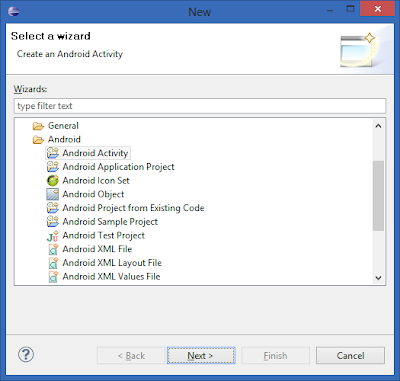Image
I got the image to install from http://downloads.raspberrypi.org/raspbian_latest.
SD Card Setup (on OS X)
Instead of downloading a special tool, I just used what was built in to OS X. It worked fine.
diskutil list
diskutil unmountDisk /dev/disk3
sudo dd bs=1m if=2014-01-07-wheezy-raspbian.img of=/dev/rdisk3
diskutil unmountDisk /dev/disk3
Airport Extreme (my main wifi access point) doesn't have a good way of finding the DHCP clients. Instead I just starting sshing to addresses at the start of the reservation range until I found my pi at 192.168.0.7. (A better way, arguably, would be to do an nmap scan, or use a wifi router that lets you see the client addresses).
Once logged in I ran:
sudo raspi-config
To configure basics like hostname, change the pi password and update the tool, etc...
ifconfig
To figure out what the mac address was so that I could set a DHCP reservation for that client so that the IP address wouldn't change again.
I then cribbed some commands from http://glynrob.com/hardware/raspberry-pi-headless/ to get the base OS update to date:
sudo aptitude update
sudo aptitude dist-upgrade
WiFi Setup
I have a Panda Wireless wifi adapter (enumerates via lsusb as 'Ralink Technology, Corp. RT5370 Wireless Adapter'). I followed these instructions to hook it to my local wifi network (using DHCP): http://kerneldriver.wordpress.com/2012/10/21/configuring-wpa2-using-wpa_supplicant-on-the-raspberry-pi/
Here's the final contents of /etc/network/interfaces:
auto lo
iface lo inet loopback
auto eth0
allow-hotplug eth0
iface eth0 inet dhcp
allow-hotplug wlan0
# have to use 'manual' with wpa-roam
iface wlan0 inet manual
wpa-roam /etc/wpa_supplicant/wpa_supplicant.conf
wireless-power off
iface default inet dhcp
To make sure wireless comes up at every boot I added the following to /etc/rc.local
# Make sure wireless comes up
sudo ifup wlan0
After all this I encountered the problem that if I plugged in ethernet, it would shutdown wifi. This was because of ifplugd. The simple solution is just to uninstall ifplugd (from http://www.raspberrypi.org/phpBB3/viewtopic.php?f=36&t=67761).
sudo apt-get purge ifplugd
This has the side-effect of leaving eth0 up even after it isn't connected. This may or may not be a problem. There's likely a better way to do this (some of which I tried with no immediate luck).
That's the basic setup. Next time, configuring bluetooth audio.
I have a Panda Wireless wifi adapter (enumerates via lsusb as 'Ralink Technology, Corp. RT5370 Wireless Adapter'). I followed these instructions to hook it to my local wifi network (using DHCP): http://kerneldriver.wordpress.com/2012/10/21/configuring-wpa2-using-wpa_supplicant-on-the-raspberry-pi/
This worked, but I was getting extremely high ping times.
64 bytes from 192.168.0.10: icmp_seq=445 ttl=64 time=434.857 ms
64 bytes from 192.168.0.10: icmp_seq=446 ttl=64 time=138.993 ms
64 bytes from 192.168.0.10: icmp_seq=447 ttl=64 time=59.932 ms
64 bytes from 192.168.0.10: icmp_seq=448 ttl=64 time=184.787 ms
64 bytes from 192.168.0.10: icmp_seq=449 ttl=64 time=105.108 ms
64 bytes from 192.168.0.10: icmp_seq=450 ttl=64 time=26.188 ms
64 bytes from 192.168.0.10: icmp_seq=451 ttl=64 time=150.148 ms
64 bytes from 192.168.0.10: icmp_seq=452 ttl=64 time=172.865 ms
Numbers like this aren't really acceptable. Some brief investigation led me to this post, which suggests seeing if 'sudo iwconfig wlan0 power off' would solve the problem. It did. Immediately after running this command my ping times fell.
64 bytes from 192.168.0.10: icmp_seq=775 ttl=64 time=103.008 ms
64 bytes from 192.168.0.10: icmp_seq=776 ttl=64 time=2.566 ms
64 bytes from 192.168.0.10: icmp_seq=777 ttl=64 time=6.522 ms
64 bytes from 192.168.0.10: icmp_seq=778 ttl=64 time=3.317 ms
64 bytes from 192.168.0.10: icmp_seq=779 ttl=64 time=2.228 ms
64 bytes from 192.168.0.10: icmp_seq=780 ttl=64 time=5.511 ms
I then added the line 'wireless-power off' to /etc/network/interfaces. This turns off power management for the 802.11 interface.64 bytes from 192.168.0.10: icmp_seq=445 ttl=64 time=434.857 ms
64 bytes from 192.168.0.10: icmp_seq=446 ttl=64 time=138.993 ms
64 bytes from 192.168.0.10: icmp_seq=447 ttl=64 time=59.932 ms
64 bytes from 192.168.0.10: icmp_seq=448 ttl=64 time=184.787 ms
64 bytes from 192.168.0.10: icmp_seq=449 ttl=64 time=105.108 ms
64 bytes from 192.168.0.10: icmp_seq=450 ttl=64 time=26.188 ms
64 bytes from 192.168.0.10: icmp_seq=451 ttl=64 time=150.148 ms
64 bytes from 192.168.0.10: icmp_seq=452 ttl=64 time=172.865 ms
Numbers like this aren't really acceptable. Some brief investigation led me to this post, which suggests seeing if 'sudo iwconfig wlan0 power off' would solve the problem. It did. Immediately after running this command my ping times fell.
64 bytes from 192.168.0.10: icmp_seq=775 ttl=64 time=103.008 ms
64 bytes from 192.168.0.10: icmp_seq=776 ttl=64 time=2.566 ms
64 bytes from 192.168.0.10: icmp_seq=777 ttl=64 time=6.522 ms
64 bytes from 192.168.0.10: icmp_seq=778 ttl=64 time=3.317 ms
64 bytes from 192.168.0.10: icmp_seq=779 ttl=64 time=2.228 ms
64 bytes from 192.168.0.10: icmp_seq=780 ttl=64 time=5.511 ms
Here's the final contents of /etc/network/interfaces:
auto lo
allow-hotplug eth0
iface eth0 inet dhcp
# have to use 'manual' with wpa-roam
iface wlan0 inet manual
wpa-roam /etc/wpa_supplicant/wpa_supplicant.conf
wireless-power off
# Make sure wireless comes up
sudo ifup wlan0
After all this I encountered the problem that if I plugged in ethernet, it would shutdown wifi. This was because of ifplugd. The simple solution is just to uninstall ifplugd (from http://www.raspberrypi.org/phpBB3/viewtopic.php?f=36&t=67761).
sudo apt-get purge ifplugd
This has the side-effect of leaving eth0 up even after it isn't connected. This may or may not be a problem. There's likely a better way to do this (some of which I tried with no immediate luck).
That's the basic setup. Next time, configuring bluetooth audio.
























